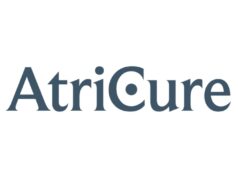 Following the announcement of CE mark approval for the Aktiia cuffless blood pressure monitor bracelet, Gregoire Wuerzner (Lausanne University Hospital and University of Lausanne, Switzerland) clinical advisor to Aktiia and President of the Swiss Society of Hypertension, discusses the potential advantages of continuous blood pressure monitoring compared to current techniques.
Following the announcement of CE mark approval for the Aktiia cuffless blood pressure monitor bracelet, Gregoire Wuerzner (Lausanne University Hospital and University of Lausanne, Switzerland) clinical advisor to Aktiia and President of the Swiss Society of Hypertension, discusses the potential advantages of continuous blood pressure monitoring compared to current techniques.
How does the Aktiia bracelet work, and what features set it apart from the established methods for monitoring blood pressure?
Aktiia’s Optical Blood Pressure Monitoring (OBPM) algorithms leverage optical sensors worn on the wrist and provide blood pressure values using photoplethysmography (PPG) to analyse the changing diameter of the arteries occurring at each heartbeat. This optical measurement is repeated automatically, so users are not aware of the measurements, thus removing the possible stressing effect of measurement itself. They do not have to interrupt their day and sleep time to take a measurement. This is different from the oscillometric method of measuring blood pressure that involves inflating a cuff on the upper arm that analyses pulse waves during constricted blood flow.
Aktiia takes over 100 blood pressure measurements per week, which is much more than people using a traditional blood pressure cuff, who easily forget to measure their blood pressure. Because Aktiia is monitoring your blood pressure 24/7 people and physicians for the first time are able to see the patients complete blood pressure pattern over hours, days, weeks and even months. This greater level of insight should help individuals better understand the impact of their daily activities such eating, working and sleeping on their blood pressure. It will also probably allow the physician to provide more tailored treatment plans.
What is the advantage to using a cuffless blood pressure monitoring system over ambulatory blood pressure monitoring?
Ambulatory blood pressure monitors are useful in that they are able to provide a physician a look at patients 24-hour blood pressure pattern such as white coat hypertension and dipping of blood pressure at night. While this is superior, in terms of cardiovascular risk assessment to a single in-clinic reading, it is still prone to a number of issues that include:
- The one day that the person is wearing the ambulatory blood pressure monitor may not be representative of every other day. They may have a bad day at work or in their personal life that causes undue stress and increases their blood pressure.
- Ambulatory blood pressure monitors are bulky and still require cuff inflation which can stress and sometimes induces pain in patients and thus elevate their blood pressure or lead to an awakening while sleeping that skews the data.
- 24-hour ambulatory blood pressure monitors are still expensive and are used by private practices or clinics and not on an individual level.
Aktiia’s cuffless approach has made significant improvements in each of these areas, including:
- The wearer and their physicians can now track blood pressure over days, weeks and months to gain a deeper understanding of their blood pressure pattern, provided that an initialisation is performed once a month to calibrate the signals.
- The wearer doesn’t feel when a measurement is taking place, hence the measurement is more representative of their true blood pressure at the time of the reading.
- Aktiia was designed to be a consumer-friendly medical technology that is affordable and easy to purchase, making it more accessible to more people.
Is the system easy to fit, and do patients need to be trained to wear it?
Extensive time and energy has gone into the design of the Aktiia system. While it is a serious medical technology that took 15 years to develop and has been validated in five clinical studies, the user experience is comparable to high quality consumer technology products. The user is guided by the companion mobile application through a set-up process that only takes a few minutes. Once set-up, the user doesn’t have to interact with the bracelet, except once every eight or nine days to recharge it or for reinitialisation once a month. They will be able to open the app on their iPhone or Android smartphone and see their data automatically appear. With a simple tap of a button in the app, they can easily share their data with their doctor or family member.

To ensure the accuracy of the measurements, the bracelet includes an accelerometer that makes sure the conditions for measurement are optimal for an accurate reading. The user doesn’t have to change their behavior or spend time thinking about what body position they need to be in or what time of the day is appropriate for the best reading. Aktiia’s technology does this all for the wearer automatically.
During our validation study, one of the most frequent questions from our participants were when and where they could get the device.
How comparable is the data to ambulatory blood pressure monitoring?
Both ambulatory blood pressure monitors and Aktiia are able to gather data over a 24-hour period. While today’s ambulatory blood pressure monitors are only used during these 24 hours, they provide a snapshot of the circadian profiles of blood pressure of patients. Aktiia offers the same capability, but over longitudinal periods, providing day and night BP readings over weeks and months. This type of data has never been acquired before in patients, and is the most impactful breakthrough of cuffless technologies. When it goes to the comparison of the accuracy between ambulatory blood pressure monitors and Aktiia’s devices, both undergo the same standards of clinical validation: the so-called ISO 81060-2. They have however not been compared head to head yet in terms of accuracy or in terms of association with target organ damage or cardiovascular risk.
Is there a benefit to being able to draw on 24/7 blood pressure data? Is there a drawback? Does having access to this data potentially tell us anything new about hypertension or the way it is treated?
There are three main benefits to 24/7 blood pressure monitoring that are well established in a number of clinical studies. They include:
- More Accurate Diagnosis
- Approximately 30% of people with hypertension experience a phenomena called “white coat” or “masked” hypertension. White coat hypertension occurs when a person presents higher blood pressure in the clinic than they do in normal life. Masked hypertension occurs when the patient presents lower blood pressure in the clinic than they do in real life. Both lead to inaccurate diagnosis at the physician’s office that could lead to over treating or undertreating a significant number of patients. Real-life blood pressure monitoring has the potential to avoid therapeutic mismanagement.
- Personalised Treatment
- A specific area that 24/7 blood pressure data can address because it gathers both day and night data is the large number of people that have abnormal circadian BP variance. This is also known as non-dipping where a person’s nighttime average blood pressure does not decrease in a meaningful way relative to their daytime blood pressure average. About 35% of hypertensive patients exhibit this non-dipping behavior. Research studies have shown that non-dippers are at increased risk for heart attack and stroke. Knowing that a person’s BP doesn’t dip at night may lead a physician to prescribe a different treatment regimen tailored to that patients’ unique needs.
- Patient Engagement
- Feedback loops are a powerful way to motivate patient engagement and behaviour change. Traditional blood pressure monitoring technologies often collect too few data points to be able to effectively provide feedback to the patient regarding the impact that their diet, exercise, medication, stress management or sleep health has on their hypertension. The promise of 24/7 blood pressure monitoring is that it provides more data, over time and can be mined to better understand cause and effect relationships that can be used to motivate more consistent patient engagement
Could the cuffless system replace traditional methods of blood pressure monitoring over time?
Yes. Accurate and validated Cuffless products like Aktiia are big step forward and represent the future of how blood pressure will be monitored outside a physician’s office.









